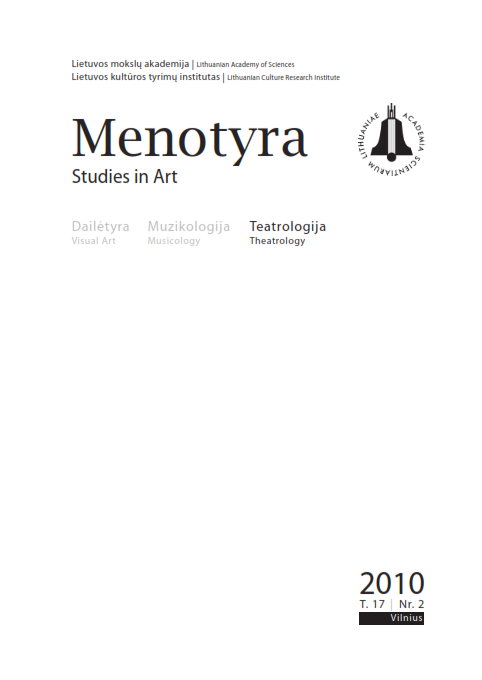Klasikos interpretacijos XX a. II pusės Lietuvos baleto teatre
Interpretations of the classics in Lithuanian ballet theatre in the second half of the 20th century
Author(s): Helmutas ŠabasevičiusSubject(s): Theatre, Dance, Performing Arts, Post-War period (1950 - 1989), Transformation Period (1990 - 2010), Present Times (2010 - today), Sociology of Art
Published by: Lietuvos mokslų akademijos leidykla
Keywords: choreography; classical ballet; reconstruction;interpretation;
Summary/Abstract: In the context of professional dance culture, the word “classical” means the ballet repertory that was formed in the end of the 19 century in the most prestigious European theatres – first of all in the Mariinsky Theatre in Saint Petersburg and Grand Opéra in Paris. The heritage of classical ballets is mostly associated with the name of Marius Petipa who created a number of ballets which have been produced, renewed and interpreted until nowadays. In the second half of the 20th century, also the Lithuanian ballet repertory included these productions. Most often produced were all three ballets of Pyotr Tchaikovsky – “Swan Lake”, “The Sleeping Beauty” and “Nutcracker”, also “Giselle” by Adolphe Adam and “Don Quixote” by Ludwig Minkus. Other ballets from the classical heritage – “Esmeralda” by Cesare Pugni and “Coppelia” by Léo Delibes – were produced as well. In the first decades after the Second World War, choreographers were trying to interpret the dramaturgy of classical ballets, adding some new ideas to the plot of the performance and new choreographical episodes to its form (“Giselle” and “Esmeralda” by Vytautas Grivickas). At the same time, other choreographers were following the traditional structure of classical ballet, mostly connected with the Moscow or Saint Petersburg productions (“Corsaire” and “Nutcracker” by Bronius Kelbauskas). The choreographer Elegijus Bukaitis produced a completely new version of “Nutcracker” in 1973, stressing the themes of E. T. A. Hoffmann, but his productions of “Swan Lake” and “Giselle” were connected with the tradition of these ballets coined in Leningrad. Vytautas Brazdylis produced “Don Quixote” on the basis of the choreography of Marius Petipa and Alexander Gorsky and at the same time created a completely original choreographical form for “Coppelia”. V. Brazdylis was the last Lithuanian choreographer interested in the reconstruction and interpretation of ballets from the classical heritage; in the end of the period, this field was taken over by the choreographers from Russia.
Journal: Menotyra
- Issue Year: 17/2010
- Issue No: 2
- Page Range: 178-186
- Page Count: 9
- Language: Lithuanian

